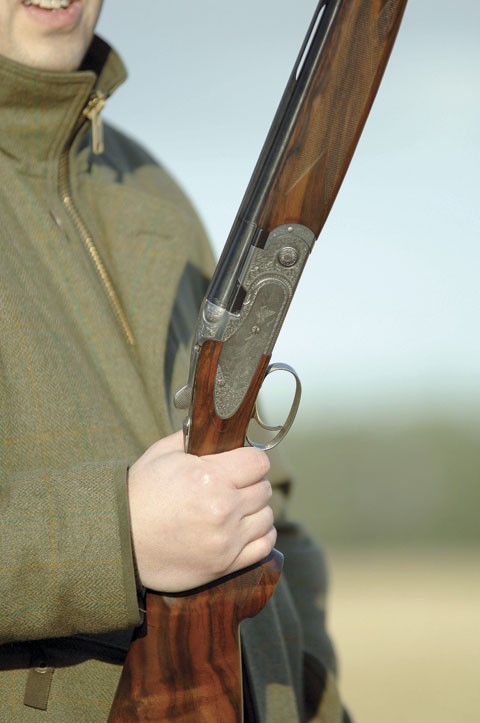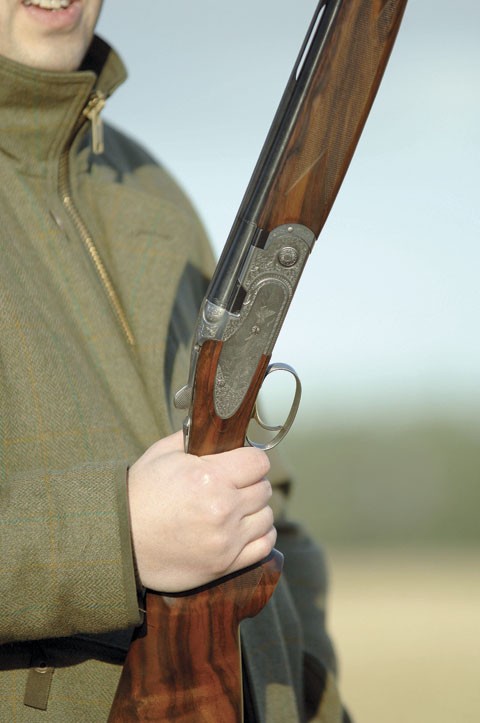Bitten by the shooting bug

Six years ago I was invited by a friend to join him for a day’s
pheasant shooting in Shropshire.
I had no experience of game shooting and had only picked up a shotgun once before.
I was only there as an observer, but as it turned out, with the permission of the shoot captain, I was allowed to shoot two drives under supervision.
I was totally hooked. I loved everything about the day; being outside in beautiful countryside, the etiquette, the company and most of all the thrill of shooting itself.
Learning to shoot
I promptly started to learn about shooting, with a view to getting a shotgun certificate and ultimately my own gun.
Christmas that year brought a course of shooting lessons at a local clay ground which I attended with two friends; one of whom was just starting out in shooting as well.
These lessons were invaluable as they covered all the basics.
Following the lessons my friends and I would regularly go back to the clay ground to practise on our own.
The certificate and gun
Next step was to apply for a shotgun certificate.
I was fortunate to have several friends who already held various certificates and they were happy to assist with the form.
In the absence of such assistance the local firearms officer is a great help in offering advice before your application is submitted.
I was given invaluable advice about where to site my gun cabinet and what to do with the keys.
The whole application process took about eight weeks.
So now it was time to buy a gun, which is a very personal decision.
It is important you feel comfortable with your gun.
This was one of the biggest problems I found in the early days of shooting.
I was very conscious, probably over-conscious, that I was holding a dangerous piece of equipment, and consequently I never felt like the gun was “part of me” whilst shooting.
For example, I mounted the gun several times and pulled the trigger only to realise that I had not released the safety catch!
On one occasion I had actually forgotten to load any cartridges.
The only way to overcome this is quite simply use the gun as often as you can.
In the end I acquired a new Beretta Silver Pigeon over-under from a local gun dealer.
This 28″ barrelled beauty will last a lifetime if looked after.
The gun was then endorsed on my certificate by the vendor and I immediately notified the firearms department of my local police force.
The legal requirement is to make the notification within seven days of acquiring the gun.
Most firearms departments will accept notification by email, but this should be checked first as it is your legal obligation to make the notification.
Another essential at this point was to join one of the shooting organisations, such as BASC or the Countryside Alliance, in order to be fully insured and support their work.
 It can take a while for new shooters to feel comfortable with the gun but with practice it all clicks into place.
It can take a while for new shooters to feel comfortable with the gun but with practice it all clicks into place.
The gear
It was now the real excitement began as I was invited to join a local syndicate.
I could not believe how lucky I had been and it was time to get serious, tog up and do some shooting.
I don’t think it is necessary to spend a small fortune on what you need, but you should spend what you can afford and get the best quality within your budget.
The minimum you would need would be an appropriate shirt, tie, breeks, jumper/jacket, boots, coat, gunslip, cartridge bag, cartridges, ear defenders and a hat.
Preparation
My first shoot day was approaching and I was filled with excitement and nerves.
Would I be able to shoot anything?
Would I look out of place in all my new gear?
How would I fit in with the guns?
As the day neared, I tried on my new shooting attire several times and practised dry mounting my new gun.
Again, this is something I would recommend, as wearing different layers of clothing on shoot day can make a difference to gun mount, so it is important to get some practise in.
I decided to buy a variety of different cartridge loads to see which one suited me best.
Cartridge choice is a personal thing and it is ultimately to do with
what you feel comfortable with.
Having tried a number of options I now shoot with 32gram No.5 shot.
First day in the field
The day of the shoot arrived.
I had assembled all the necessary equipment the night before, again a recommendation I would make to avoid last-minute panics and ultimately the risk of leaving something important behind.
The following morning we met at a local pub and having met the fellow guns I felt a lot more at ease; but how would I fare in the field?
Pegs were drawn and we were soon off to the first drive.
I remember I had drawn peg No. 6 and the shoot captain placed me in the corner of a field,the birds being flushed from some game cover 100 or so yards away.
I unsleeved my gun and slipped a couple of cartridges into the chambers.
It was time to put into practice everything I had been taught.
Where were the birds coming from?
Were my feet in the right place?
Where were the other guns and where was my “shooting window”?
Where were the beaters going to be?
What would be a safe shot?
I barely had time to consider these questions before the first flush of birds came over my peg.
I raised my gun, took the shot, and lo and behold with my second barrel I had brought down my first ever pheasant!
What a huge relief.
I settled in to the rest of the day slowly but surely, enjoying the company of the other guns and their shooting.
Lunch was taken on the hoof out of the back of the vehicles.
I had packed pork pie, black pudding and some Shropshire Blue cheese which has become my staple shoot lunch.
The rest of the day went well and we retired to the pub for a meal with the beaters and pickers-up.
My first shoot day was everything I had hoped it would be.
Parting shots
Over the past few seasons I have experienced many things from which I have learned, all of which have made the next time a little bit easier and more enjoyable.
Every now and then panic used to creep in when I mounted the loaded gun.
The best solution for this was to de-mount the gun and break it, remove the cartridges, take a few deep breaths and start again.
If in doubt about a shot don’t take it – it is probably unsafe or unsporting to do so.
All in all the best advice is to be alert, watch what is going on and above all be safe.
You never stop learning or loving this fantastic sport of ours.
For more shoot features click here








